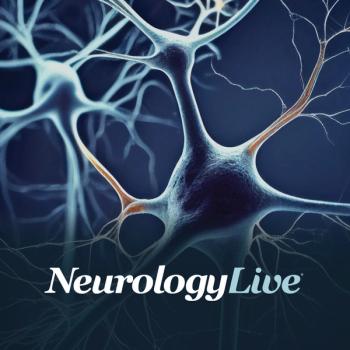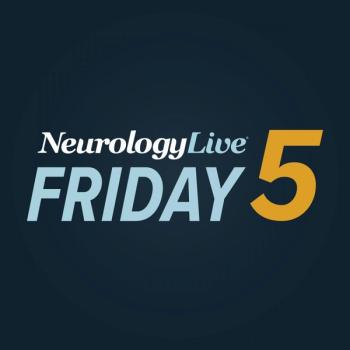
Gene Therapy, ASOs, and Beyond: What’s Coming for Huntington Disease
Key Takeaways
- Emerging therapies for HD target the disease's genetic roots, aiming to reduce mutant huntingtin protein levels and potentially offer clinical benefits.
- PTC518, tominersen, and WVE-003 are among the promising treatments showing significant reductions in mutant protein levels in clinical trials.
Explore groundbreaking therapies in development for Huntington disease, targeting its root causes and offering hope for improved patient outcomes.
Huntington disease (HD) is a progressive, inherited neurodegenerative disorder marked by movement abnormalities, cognitive decline, and psychiatric symptoms. Caused by a CAG repeat expansion in the HTT gene, the resulting toxic buildup of mutant huntingtin protein leads to widespread neuronal damage. Despite advances in genetic testing and diagnosis, there are still no disease-modifying therapies—only symptomatic treatments that offer limited relief and do not slow progression.
In recent years, however, the therapeutic outlook has begun to shift. Emerging treatments in the clinical pipeline are targeting HD at its source, including antisense oligonucleotides, RNA interference, small molecules, and gene-editing technologies. Early trial data suggest these approaches may reduce mutant protein levels and show signs of clinical benefit. While key questions around safety and durability remain, these efforts signal a promising new era in the fight against HD.
In the feature below, the NeurologyLive® team explored the most promising therapies currently in development for HD, highlighting early clinical successes, novel mechanisms of action, and what these advances could mean for the future of care.
Clinical Pipeline
PTC518 (PTC Therapeutics)
PTC518, developed by PTC Therapeutics, is an oral small molecule therapy designed to increase the production of mutated huntingtin (HTT), which contributes to neuronal damage and disease progression in HD. It is selectively bioavailable, able to cross the blood-brain barrier, titratable, and not subject to efflux, distinguishing it from other treatments.
After showing promising phase 2 data, the company is planning work with the FDA on an accelerated approval path for the agent as a potential treatment for HD. The latest study data, announced in May, showed that
Also known as PIVOT-HD, results from the phase 2 study showed a dose-dependent trend of benefit in Stage 2 patients in terms of clinical scales like Composite Unified Huntington’s Disease Rating Scale (cUHDRS) and Total Motor Score (TMS) subscale. In addition, patients on the drug for 24 months (n = 21) showed dose-dependent lowering of plasma neurofilament light, a biomarker of neuroaxonal damage, during the study period. Overall, investigators recorded decreases of –8.9% (nominal P = .12) at the 5 mg dose level and –14% (nominal P = .03) for the 10 mg dose level.1
Tominersen (Roche)
Like many other agents in the pipeline, tominersen is designed to reduce the production of the HTT protein, including its mutant form, which is implicated in HD pathogenesis. It achieves this by binding to HTT messenger RNA, leading to its degradation and consequently lowering HTT protein levels. Administered via intrathecal injection, tominersen delivers the antisense oligonucleotide directly into the cerebrospinal fluid to reach the central nervous system.
Tominersen is currently being studied in GENERATION HD2, a phase 2 trial (NCT05686551) comprising 301 patients with HD testing 2 dose levels of the agent (100 mg and 60 mg) against placebo, administered every 4 months via a spinal injection. The trial was
GENERATION HD2 is a follow-up to GENERATION HD1 (NCT03761849), a phase 3 trial of tominersen that was discontinued in early 2021. Data from GENERATION HD1, published in the New England Journal of Medicine, showed dose-dependent reductions in HTT, with the greatest changes observed in the 2 highest-dose groups (90 mg: 42% reduction; 120 mg: 38% reduction). Months after the conclusion of the original trial, GENERATION HD2 was decided upon after a post-hoc analysis from the original study showed a possible benefit for a subgroup of patients who are younger with less disease burden.3
WVE-003 (Wave Life Sciences)
An investigational allele-selective antisense oligonucleotide therapy, WVE-003 targets a specific single nucleotide polymorphism (SNP3) present on the mutant HTT gene transcript. By binding to this SNP, the agent promotes degradation of mutant HTT mRNA, reducing the production of the toxic mHTT protein. The belief is that this allele-selective strategy will mitigate the pathological effects of mutant HTT while preserving the beneficial benefits of wild type HTT.
Positive results from the
In the multidose portion of the 28-week study (n = 23), patients with HD received either every-8-week (Q8W) intrathecal doses of 30 mg WVE-003 (n = 16) or placebo (n = 7), with 12 weeks of follow up. Most WVE-003–treated patients with Huntington disease showed neurofilament light (NfL) levels similar to placebo or levels that normalized over time. At 24 weeks, mHTT reduction correlated with slower caudate atrophy (R = –0.50; P = .047), a marker linked to clinical progression. Although not powered for clinical outcomes, WVE-003 was associated with a numerically smaller decline in Total Motor Score vs placebo (mean difference: 4.25; P = NS).
Pridopidine (Prilenia Therapeutics)
Developed by Prilenia Therapeutics, pridopidine functions as a highly selective agonist of the sigma-1 receptor (S1R), a protein that modulates cellular stress responses and neuroprotective pathways. By activating S1R, pridopidine aims to enhance neuronal survival and function, potentially slowing down HD disease progression. In September 2024, the European Medicines Agency
The MAA application was based on the totality of safety and evidence from the agent’s extensive development program, which includes the phase 3 PROOF-HD trial (NCT04556656). In PROOF-HD, treatment with pridopidine resulted in improved or stabilized outcome measures for at least 1 year and displayed superiority against placebo for up to 78 weeks on all end points after excluding those on antidopaminergic medications (ADMs).6
Among patients not receiving antidopaminergic medications, pridopidine treatment led to sustained improvement in cUHDRS scores through week 78, compared with placebo. Gains in Q-Motor function and Stroop Word Reading were observed by week 26 and maintained through week 78, with a trend toward improved quality of life (HD-QoL) also noted. Furthermore, a responder analysis of patients without ADMs revealed that pridopidine enhanced responder rates (5% improvement as threshold) across all visits for multiple key end points including cUHDRS, SWR, and Q-Motor.
AMT-130 (uniQure)
AMT-130, an adeno-associated virus serotype 5 (AAV5) vector-based gene therapy, is designed to deliver synthetic microRNA directly into the brain. This miRNA is geared to bind to the messenger RNA of the HTT gene, leading to its degradation and thereby reducing the production of both mutant and normal huntingtin proteins. By lowering these protein levels, AMT-130 aims to prevent the formation of toxic aggregates the contribute to neuronal damage in HD.
The gene therapy is currently being evaluated in 2, phase ½ trials: one in the United States (NCT04120493) and another in Europe (NCT05243017). In these studies, the therapy is administered as a single dose via MRI-guided neurosurgical infusion into specific brain regions affected by HD. Through alignment with the FDA, the studies, which use a natural history external control as a comparator, could serve as the primary basis for a future biologics license application under the accelerated approval pathway.
Interim data from the European-based phase 1/2 trial led to the FDA’s decision to grant regenerative medicine advanced therapeutic designation. In the previously announced interim update, the therapy demonstrated a 0.95-points difference on Total Functional Capacity (TFC) at 30 months in the low-dose group and 0.49-points difference at 18 months in the high-dose (baseline values; low-dose, 11.9; high dose, 12.2). Additionally, patients on active therapy showed a 2.80-point difference in Total Motor Score (TMS) at 30 months in the low-dose and 1.70-point difference in the high-dose at 18 months (baseline values; low-dose, 13.3; high-dose, 12.1).7,8
SKY-0515 (Skyhawk Therapeutics)
SKY-0515 is an investigational small molecule RNA splicing modifier developed through Skyhawk Therapeutics' novel RNA-splicing platform, designed to reduce both HTT protein and PMS1 protein. The agent is currently being studied in a first-in-human phase 1 trial separated into 3 parts to assess the safety, tolerability, pharmacokinetics, and pharmacodynamics in healthy volunteers and individuals with early-stage HD.
Topline pharmacodynamic data from Parts A (single-ascending dose) and B (multiple-ascending dose) of the trial, which investigated SKY-0515 in healthy volunteers, displayed a dose-dependent reduction of HTT mRNA and reached an average reduction of 72% at a daily oral dose of 9mg. The company also reported that SKY-0515 was generally well tolerated in all doses tested.9
Part C of the trial is a double-blind placebo-controlled parallel design study of 2 dose levels of SKY-0515 and placebo amongpatients with early-stage HD, which aims to further explore thesafety, tolerability, pharmacokinetics, and pharmacodynamic parameters of the agent. Skyhawk Therapeutics noted that recruitment for this part of the trial is ongoing, and topline data are anticipatedfor mid-2025.
VO659 (Vico Therapeutics)
VO659 is an investigational allele-preferential antisense oligonucleotide (ASO) therapy, granted both FDA and EMA orphan drug designation for the treatment of HD. The agent is in development to suppress mHTT in an allele-preferential manner and slow or halt disease progression.The agent is currently in an ongoing open-label basket phase 1/2 trial (NCT05822908) investigating the safety and tolerability of multiple ascending doses of VO659 given intrathecally to patients with early manifest HD or mild to moderate spinocerebellar ataxia types 1 and 3.10
Endpoints of the study include the assessment of the pharmacodynamic biomarkers (mHTT, total HTT, mATXN3, total ATXN3 and neurofilament light chain) in cerebrospinal fluid (CSF), plasma pharmacokinetics, and clinical outcome measures. Interim results of VO659 in the trial, presented at the European Huntington's Disease Network's EHDN & Enroll-HD 2024 meeting, resulted in reductions in HTT among patients with HD.
Through day 85 of the study, patients on 40 mg of VO659 demonstrated a 28% mean reduction in CSF mHTT relative to the first dose at day 29. During this time, there were no sustained increase or decrease in neurofilament light protein, a marker of neuroaxonal damage, in CSF across treated participants. Above all, the therapy was safe and well tolerated at doses of 40 mg. Furthermore, it showed a long half-life, indicatingthe potential for infrequent dosing estimated at 1-2 times per year.11
ANX005 (Annexon Biosciences)
ANX005,a humanized monoclonal treatment in development for patients with early-stage HD, is designed to prevent synaptic loss and slow HD progression by suppressing the complement component 1q (C1q).The investigational therapy’s safety, tolerability, pharmacological properties, and preliminary efficacy was evaluated in phase 2a trial (NCT04514367) among 28 adults with early-stage HD.
Final results from the phase 2a study showed that the therapy was generally well tolerated, maintained full target engagement, and showed clinical improvement in a subgroup of patients with HD with high baseline C4a/C4 levels.In terms of safety, the primary objective of the trial, investigators observed transient infusion-related reactions, mainly transient maculopapular rash, in all patients during the first dose. Lupus-like presentation and idiopathic pneumonitis, the only 2 recorded serious adverse events (AEs), were reversed or improved upon treatment discontinuation.12
In the study, ANX005showed complete and durable inhibition of this complement component in CSF and serum that was consistent with drug levels.For those who completed 24 weeks of treatment, mean plasma and CSF neurofilament light levels tracked with NfL natural history. Using composite cUHDRS and TFC, 2 commonly used measures in HD research, investigators observed clinical disease progression that was stable in the overall patient population. Additionally, a trend of decreased CSF YKL40 suggested a positive impact of ANX005 on microglial activity in patients who exhibited improved clinical response.
SOM3355 (SOM Biotech)
SOM3355 is a vesicular monoamine transporter 2 (VMAT2) inhibitor being developed as an oral treatment for chorea related to HD. The agent’s safety and efficacy was assessed in a phase 2b trial (NCT03575676)in 32 adults with chorea related to HD, where participants were separated into 2 groups. The study’s primary objective was to identify how many patients treated with SOM335 experienced a reduction of at least 2 points in the UHDRS total maximal chorea score relative to the placebo treatment.
The first group of participants in the trial received 100 mg of SOM335 twice daily for 6weeks, then 200 mg of SOM3355 twice daily for another 6 weeks prior to going back to 100 mg of SOM3355 twice daily for 6weeks, and then changing to a placebo twice daily for the last6 weeks. Meanwhile, the second group was given the same treatment, but the first 6-week period had a placebo instead of the last week.Findings revealed that 57.1% of the total participants demonstrated a 2-pont reduction on UHDRS-TMC during the SOM3355 treatment period in comparison with the placebo period.13
Additionally, results showed that 10.7% of patients had an improvement of at least 6 points on UHDRS-TMC with SOM3355 relative with the placebo. In terms of safety, researchers noted that the therapy was generally safe and well-tolerated, with no reports of treatment-related serious adverse effects. Only 1 patient experienced depression or suicidal ideation, which was considered not related to the study treatment since the patient had such thoughts before initiating SOM3355 and wasn’t reported any worsening.
Cellavita-HD (AzidusBrasil)
Cellavita-HD is an investigational stem cell therapy, involving involves dental-pulp-derived mesenchymal stem cells (DMSCs), that may aid in the restoration of lost brain cells among patients living with HD. The cell therapy’s efficacy and safety were assessed in a phase 2 trial (NCT03252535) where patients with HD received 3 injections of a lower dose of Cellavita-HD or a higher dose of Cellavita-HD or placebo, 1 injection each month for 3 months.Researchers performed a motor assessment using the UHDRS scale and evaluated improvement by correlating before and after treatment scores.14
The therapy was also assessed in a phase 2/3 trial which is an extension of the phase 2 dose-response study, where participants will receive the maximum dose tested in the prior study, receiving a total of 12 intravenous administrations doses divided into 3 administrations per cycle. Each infusion given to the participants would occur every 30 days and cycles every 180 days with a total of 4 cycles.The maintenance of efficacy is being evaluated by comparing the total UHDRS score registered at baseline and then again at the 2-year mark.
Another trial assessed the investigational stem cell therapy in a phase 1 study (NCT02728115) of a smaller male population, which potentially helped in the advancement of protocols for MSC-based therapies. In this study, participants with HD were given 3 intravenous injections and will be followed for 5 years to assess safety and tolerability of the treatment and preliminary evidence of efficacy.
REFERENCES
1. PTC518 PIVOT-HD Study Achieves Primary Endpoint. News release. PTC Therapeutics. May 5, 2025. Accessed May 29, 2025. https://www.prnewswire.com/news-releases/ptc518-pivot-hd-study-achieves-primary-endpoint-302445673.html
2. An Update on Dosing for GENERATION HD2. Hdyo/Roche. April 17, 2025. Accessed May 29, 2025. https://www.hdyo.org/a/852-an-update-on-dosing-for-generation-hd2
3. Tabrizi SJ, Leavitt BR, Landwehrmeyer GB, et al. Phase 1-2a IONIS-HTTRx Study Site Teams. Targeting huntingtin expression in patients with Huntington’s disease. N Engl J Med. 2019;380(24):2307-2316. doi:10.1056/NEJMoa1900907
4. Wave Life Sciences Announces Positive Results from Phase 1b/2a SELECT-HD Trial with First Clinical Demonstration of Allele-Selective Mutant Huntingtin Lowering in Huntington’s Disease. News Release. Published June 25, 2024. Accessed May 29, 2025. https://www.globenewswire.com/news-release/2024/06/25/2903685/0/en/Wave-Life-Sciences-Announces-Positive-Results-from-Phase-1b-2a-SELECT-HD-Trial-with-First-Clinical-Demonstration-of-Allele-Selective-Mutant-Huntingtin-Lowering-in-Huntington-s-Dise.html
5. Prilenia’s Pridopidine for Huntington’s Disease Accepted for European Marketing Authorisation Review. News Release. Published September 3, 2024. Accessed May 29, 2025. https://news.prilenia.com/press-releases/press-release-details/2024/Prilenias-Pridopidine-for-Huntingtons-Disease-Accepted-for-European-Marketing-Authorisation-Review/default.aspx
6. Geva M, Reilmann R, Feigin A, et al. Analyses of the Phase 3 Trial of Pridopidine’s Outcome on Function in Huntington Disease (PROOF-HD) Demonstrates Efficacy in Participants Without Antidopaminergic Medications. Presented at: 2024 AAN Annual Meeting; April 13-18; Denver, CO.
7. uniQure Receives FDA Regenerative Medicine Advanced Therapy (RMAT) Designation for Investigational Gene Therapy AMT-130 in Huntington’s Disease. News Release. Published June 3, 2023. Accessed December 11, 2024. https://www.globenewswire.com/news-release/2024/06/03/2892124/0/en/uniQure-Receives-FDA-Regenerative-Medicine-Advanced-Therapy-RMAT-Designation-for-Investigational-Gene-Therapy-AMT-130-in-Huntington-s-Disease.html
8. uniQure Announces Update on Phase I/II Clinical Trials of AMT-130 Gene Therapy for the Treatment of Huntington’s Disease. News Release. Published December 19, 2023. Accessed December 11, 2024. https://www.globenewswire.com/news-release/2023/12/19/2798425/0/en/uniQure-Announces-Update-on-Phase-I-II-Clinical-Trials-of-AMT-130-Gene-Therapy-for-the-Treatment-of-Huntington-s-Disease.html
9. Skyhawk Therapeutics Receives Australian Regulatory Approval to Extend SKY-0515 Treatment Duration in Phase 1 Huntington's Disease Patient Trial. Skyhawk Therapeutics. December 10, 2024. Accessed May 29, 2025. https://www.prnewswire.com/apac/news-releases/skyhawk-therapeutics-receives-australian-regulatory-approval-to-extend-sky-0515-treatment-duration-in-phase-1-huntingtons-disease-patient-trial-302326397.html
10. Vico Therapeutics Announces Positive Interim Phase 1/2a Clinical Data of VO659 in Treatment of Huntington's Disease. News release. Vico Therapeutics. May 29, 2025. Accessed September 13, 2024. https://www.prnewswire.com/news-releases/vico-therapeutics-announces-positive-interim-phase-12a-clinical-data-of-vo659-in-treatment-of-huntingtons-disease-302247239.html
11. Vico Therapeutics Announces First Patient Dosed in Phase 1/2a Clinical Trial of VO659 in Huntington's Disease and Spinocerebellar Ataxia Types 1 and 3. News Release. Vico Therapuetics. Published April 3, 2023. Accessed May 29, 2025. https://vicotx.com/vico-therapeutics-announces-first-patient-dosed-in-phase-1-2a-clinical-trial-of-vo659-in-huntingtons-disease-and-spinocerebellar-ataxia-types-1-and-3/
12. Kumar R, Claassen D, Mongan A, et al. A phase 2 open-label study to assess the safety, tolerability, pharmacokinectis, and pharmacodynamics of intravenous ANX005 in patients with, or at risk of, manifest huntington disease (HD). Presented at: 2023 AAN Annual Meeting; April 22-27; Boston, MA. 003366
13. Gamez J, Calopa M, Muñoz E, et al. A proof-of-concept study with SOM3355 (bevantolol hydrochloride) for reducing chorea in Huntington's disease. Br J Clin Pharmacol. 2023;89(5):1656-1664. doi:10.1111/bcp.15635
14. Van de Roovaart HJ, Nguyen N, Veenstra TD. Huntington's Disease Drug Development: A Phase 3 Pipeline Analysis. Pharmaceuticals (Basel). 2023;16(11):1513. Published 2023 Oct 24. doi:10.3390/ph16111513
Newsletter
Keep your finger on the pulse of neurology—subscribe to NeurologyLive for expert interviews, new data, and breakthrough treatment updates.


































